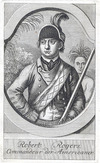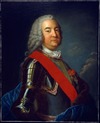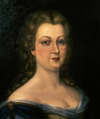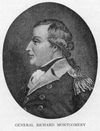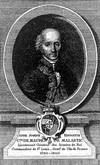lieutenant-colonel of the 34th Foot. He took part in the operations in 1776 that drove the Americans from Quebec and up Lake Champlain to Ticonderoga (N.Y.). When Major-General John
Champlain. Saunders had never commanded a fleet in a major action before, but on 9 Jan. 1759, recommended by Anson, he was appointed commander of the fleet bound for the St Lawrence. One month later
decision to fortify the Lake Champlain approaches to the colony, Bleury entered his element. He became chief of the intendant’s transportation services in the region. His enormous fleet of bateaux, each
operations. In March 1756 William Shirley, acting commander-in-chief, instructed him to raise a company of rangers for scouting and intelligence duties in the Lake Champlain region. Rogers did not invent this
Duquesne. Other Anglo-American forces were being massed for assaults on the French forts at Niagara and on Lake Champlain.
As governor general Vaudreuil
. The mill was well situated to saw the wood from the upper Richelieu and Lake Champlain and thus to supply timbers, planks, and sheathing to the shipyards at Quebec. Louise de Ramezay did not always run
Dieskau* and later Montcalm* in the Lake Champlain region. During the winter of 1757–58 he was in Quebec, where he associated with
PIOT DE LANGLOISERIE (L’Angloiserie), MARIE-MARGUERITE, dite Saint-Hippolyte – Volume IV (1771-1800)
Champlain, Sainte-Famille, Île d’Orléans, and Pointe-aux-Trembles (Neuville). They had not yet resumed the mission in Lower Town, Quebec; the mission at Château-Richer, founded by Marguerite Bourgeoys herself
Abercromby’s troops, which were concentrated on the Hudson with a view to invading Canada via Lake Champlain
Carillon (Ticonderoga, N.Y.) and with Amherst in 1759 on Lake Champlain, and along with Robert
Lanoullier* de Boisclerc to Batiscan, Champlain, and finally Saint-Maurice, he drew up a report to Maurepas, the minister of Marine, which included an assessment of the favourable and disadvantageous
Amherst’s army began to move down Lake Champlain on 11 Oct. 1759 to attack the French under François-Charles de
spoken of settling permanently and had obtained extensive properties across the river from the town, as well as on lakes Champlain and Saint-Pierre. But although he retained the nominal governorship of the
Amherst on Lake Champlain and in 1760 with William Haviland in the operations leading to the conquest
collapsed under the task without them.” Malartic subsequently went to the Lake Champlain region – to Fort Saint-Frédéric (near Crown Point, N.Y.), and to Fort Carillon (Ticonderoga), where in the summer
Doreil* called it a “most daring expedition.” At the beginning of August 1758 Marin encountered a detachment commanded by Robert Rogers in the woods near Lake Champlain. Marin gradually withdrew from
Dosquet in the chapel of the episcopal palace. The following year he succeeded Joseph Dufrost de La Gemerais as parish priest of Champlain. In October 1735 he became priest of the parish of
–47). W. C. Watson, Pioneer history of the Champlain valley . . . (Albany, N.Y., 1863), 178–84. Margaret Angus, “The Macaulay family of Kingston,” Historic Kingston
gratitude for his father’s missionary work. However, Lÿdius settled on the Hudson River at the great portage between the Hudson valley and Lake Champlain. His establishment, called Fort Lydius (Fort Edward
Britain, and assaults were planned on Louisbourg, Île Royale (Cape Breton Island) to be followed by an attack on Quebec, on the French forts on lakes Champlain and Ontario, and on Fort Duquesne (Pittsburgh




